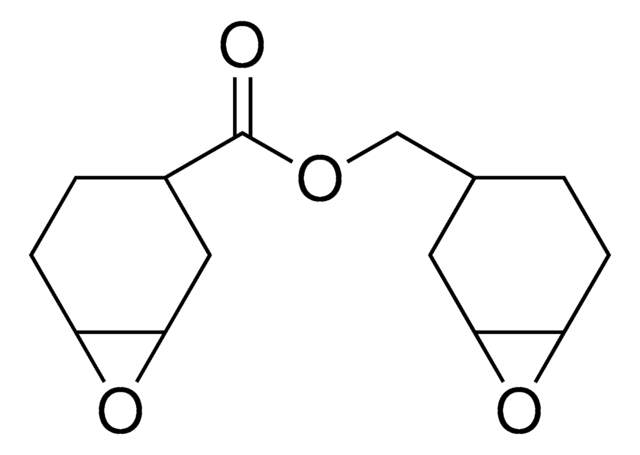430234
Bisphenol A diglycidyl ether, brominated
mol wt 350-450 g/epoxide by perchloric acid method
Sinónimos:
4,4′-(1-Methylethylidene)bis[2,6-dibromophenol] polymer with (chloromethyl)oxirane, 4,4′-(1-methylethylidene)bis(2,6-dibromophenol), Tetrabromobisphenol A-epichlorohydrin polymer
About This Item
Productos recomendados
Formulario
solid
mol peso
350-450 g/epoxide by perchloric acid method
Extensión del etiquetado
48 wt. % Br
viscosidad
1,800 cSt(lit.)
mp
55-65 °C (lit.)
temperatura de transición
softening point 55-65 °C (Durrans)
solubilidad
a variety of ketone, aromatic hydrocarbon and ether alcohol solvents: soluble
cadena SMILES
Brc2c(c(cc(c2)C(C)(C)c3cc(c(c(c3)Br)O)Br)Br)O.ClCC1OC1
InChI
1S/C15H12Br4O2.C3H5ClO/c1-15(2,7-3-9(16)13(20)10(17)4-7)8-5-11(18)14(21)12(19)6-8;4-1-3-2-5-3/h3-6,20-21H,1-2H3;3H,1-2H2
Clave InChI
DEGGCMXJUHYWMD-UHFFFAOYSA-N
Categorías relacionadas
Descripción general
Aplicación
Propiedades físicas
Palabra de señalización
Warning
Frases de peligro
Consejos de prudencia
Clasificaciones de peligro
Eye Irrit. 2 - Skin Sens. 1
Código de clase de almacenamiento
11 - Combustible Solids
Clase de riesgo para el agua (WGK)
WGK 3
Punto de inflamabilidad (°F)
235.4 °F - closed cup
Punto de inflamabilidad (°C)
113 °C - closed cup
Equipo de protección personal
dust mask type N95 (US), Eyeshields, Faceshields, Gloves
Elija entre una de las versiones más recientes:
¿Ya tiene este producto?
Encuentre la documentación para los productos que ha comprado recientemente en la Biblioteca de documentos.
Los clientes también vieron
Nuestro equipo de científicos tiene experiencia en todas las áreas de investigación: Ciencias de la vida, Ciencia de los materiales, Síntesis química, Cromatografía, Analítica y muchas otras.
Póngase en contacto con el Servicio técnico




![Bis[4-(glycidyloxy)phenyl]methane mixture of isomers](/deepweb/assets/sigmaaldrich/product/structures/915/436/edb8eab6-834e-4238-a904-bf72c573b686/640/edb8eab6-834e-4238-a904-bf72c573b686.png)




